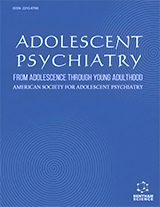Abstract
Alzheimer’s disease (AD) is the most common cause of dementia globally. The prevalence has increased dramatically with an aging population. Although considerable progress has been made over the last few decades in understanding the pathophysiology of AD, early and accurate diagnosis of the disorder is still a formidable challenge, and there is currently no effective treatments available to slow down disease progression. The fundamental issue on this disadvantage is largely due to a lack of reliable biomarkers for neurodegeneration in the brain. However, mounting evidence has shown that except the brain, the eye, particularly the retina, is also affected in AD. Because of its transparent nature and ease of accessibility, the eye can serve as a ‘window’ into the brain. Advanced imaging technologies enable observation of changes in the retina in real time, e.g. measurement of thickness of the retinal nerve fibre layer (RNFL) by coherence tomography (OCT), detection of changes in the optic nerve head (ONH) by confocal scanning laser ophthalmoscopy (cSLO), and monitoring of retinal neuronal apoptosis by DARC (Detection of Apoptosing Retinal Cells). In addition to the ocular structural changes in AD patients, similar pathological mechanisms identified in the brain have also been established in the retina, including increased amyloid-ß (Aß) deposition and tau pathology. Furthermore, AD-related changes in the retina have also been observed in eye diseases, including glaucoma and age-related macular degeneration (AMD), and targeting of Aß has been demonstrated to be neuroprotective for those eye diseases. This review focuses on the recent advances in ocular changes, particularly retinal neurodegeneration in AD, discusses pathological similarities between AD and eye diseases, and highlights the potential of retinal imaging in identification of promising biomarkers for early AD.
Keywords: Aß, Alzheimer’s disease, AMD, DARC, Glaucoma, Retinal imaging, Retinal neurodegeneration, Tau.


.jpg)



















